For many companion animals, a visit to their veterinary surgeon can be a very stressful and anxious experience. It frequently represents a novel environment or may be associated with previous adverse experiences. Stress factors for pets can include an unfamiliar environment, separation from family, the presence of other animals, noise and noxious procedures performed by strangers; they cannot predict or control what happens to them. By being aware of the signs of stress and anxiety in hospitalized patients and providing structured, evidencebased approaches to environmental enrichment (EE), the welfare of patients can be greatly improved.
The degree to which a patient is stressed by a visit to, or stay at, a veterinary clinic and the degree to which it suffers because of this depends on the animal's experience, genetics and capacity to avoid or control their situation (Bradshaw and Goodwin, 1998; BCSPCA, 2004; Hewson, 2008). This article aims to outline some simple approaches to reducing stress in hospitalized dogs and cats using both proven methods and methods with overwhelming anecdotal evidence. A structured programme of EE has benefits to not only the patient but also the pet owners and the veterinary practice team.
The stress factor
Research shows that animals undergo physiological changes, including increased heart rate and cortisol release, that are associated with negative feelings such as anxiety or fear (Gregory, 2004). Furthermore, some dogs and cats do experience extreme stress through being separated from their owners and kept in a cage (Valsanen et.al, 2005; Dybdall, 2007; Hewson, 2008). Owners want to see that their pet is as relaxed and as happy as possible when hospitalized and so the traditional primary concern of veterinarians and veterinary nurses regarding the health of clients' pets must be extended to include how the pet is feeling when in their care.
An adverse mental health state (especially if prolonged) has the potential to exacerbate pain, slow recovery and affect an animal's general health (Hewson, 2008). Secondary to this, a stressed patient (Figure 1) can be difficult to manage and as such is at an increased risk of injuring itself or personnel.
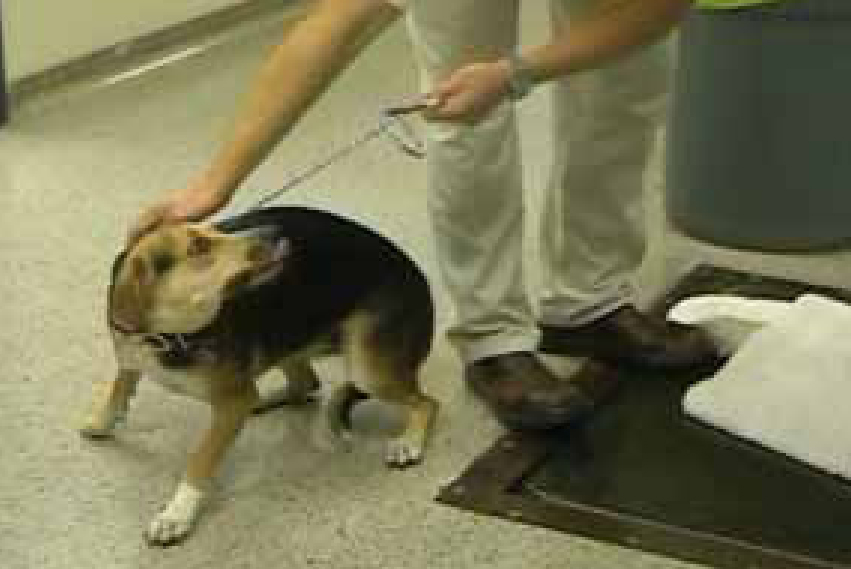
It must be recognized that there is a significant possibility that animals can experience positive feelings as well as negative, as acknowledged by those working in all facets of the animal industry (Hewson, 2008). Concern for animal welfare has tended to cause veterinary practitioners to overlook the possibility of giving pleasure to animals that may not be suffering, but that would enjoy a better quality of life given some, generally very simple, changes to their husbandry (Fraser and Duncan, 1998; Duncan, 2006; Hewson, 2008).
Literature relating to the positive impacts and effects of EE on the behaviour and health of cats and dogs relates mostly to animals in shelters, pounds and rescue centres (Wells, 1998, Wells, 2000; Reinhardt and Reinhardt, 2002; Graham, 2005; Tod, 2004; Gourkow and Fraser, 2006). However, little research has looked at the benefits of reducing stress within the veterinary clinic. Proven strategies include human handling (outside of veterinary procedures), grooming, feeding enrichment and play therapy, and incorporation of these into an EE programme as part of practice policy would be an easy task. EE can be implemented as a preventative measure for animals that experience stress associated with hospitalization (Ellis, 2009).
Recognizing stress
Cats and dogs exhibit stress in many ways. For this reason it is desirable that those working within a veterinary clinic learn to recognize the signs of emotional stress, as being distinct from pain-induced stress, in hospitalized patients. Table 1 lists some of the common signs of stress in dogs and cats as extrapolated from available research (Flannigan and Dodman, 2001; Wells, 2002; Graham et al, 2005; Hewson, 2008; Ellis, 2009; Segurson, 2009). These signs can be used as a tool in developing an appropriate EE programme to suit individual animals' needs.
Table 1. Some of the more common signs of stress in dogs and cats
| Dogs | Cats | |
|---|---|---|
| Increased heart rate | √ | √ |
| Increased respiratory rate | √ | √ |
| Dilated pupils | √ | √ |
| Tense body posture | √ | |
| Hiding in back of cage or box | √ | √ |
| Inappetence (loss of appetite) | √ | √ |
| Lack of interest in the environment | √ | √ |
| Lack of interest in people | √ | √ |
| Panting | √ | |
| Vocalizing | √ | √ |
| Over grooming | √ | √ |
| Lack of self care | √ | |
| Pacing | √ | √ |
| Circling | √ | |
| Jumping against cage front | √ | |
| Salivating | √ | √ |
| Coprophagia | √ |
McCune (1994) proposed that cats behaviourally express their negative emotional states either actively or passively. Table 2 gives a summary of passive and active behaviours commonly exhibited by cats in response to confinement. It is critical to be able to recognize both types of cats as typically the passive type cats are thought to be ‘content’ when in fact it is more likely that they are depressed. Riccomini (2007) suggests that cats who have shown signs of stress when hospitalized can continue on a negative emotional plane for some hours or days after returning home, with cats hiding, not eating and showing aggression. These behaviours are of particular concern in sick or convalescent animals as their health is already compromised and additional stress may delay healing.
Table 2. Active versus passive expression of emotional states in cats
| Active | Passive |
|---|---|
|
|
Similarly, exposure to novel environments or previous negative experiences, together with the processes of restraint and the perceived inability to escape from a potentially threatening situation, may provide specific cues for aggression in dogs (Archer, 1976). Fear, anxiety and frustration may also result in preparatory arousal and lower aggression thresholds further (Panksepp, 1998). As a result, some dogs can be extremely difficult and dangerous to handle at future clinic visits. Therefore, it is imperative to ensure an animal's initial visit to a veterinary surgeon is as stress free as possible. Incorporating EE into clinic policy and procedures may contribute to providing a stress free experience.
Current research
Traditionally, research investigating stress in dogs and cats has been primarily focused on shelter environments. While the length of stay for animals in a shelter can be very much longer than a patient's stay in hospital, many of the recommendations that arise from these studies can be extrapolated for use in the veterinary clinic. One particular study (Gourkow and Fraser, 2006) compared stress in cats housed in traditional cages (Figure 2) with those housed in enriched cages (Figure 3) at a shelter. Stress was measured using the well-documented Cat-Stress-Scores (Kessler and Turner, 1997; Gourkow and Fraser, 2006). The traditional cages contained food, water, a litter tray, newspaper on the floor and a towel for bedding, coupled with inconsistent interaction with various caregivers. The enriched cage was similar but had a shelf attached half way up the cage door with a towel draped over it in order to allow cats to perch on top of the shelf or hide under it. Cats in these cages also had access to toys and had the same caregiver for feeding, cleaning and social interaction.
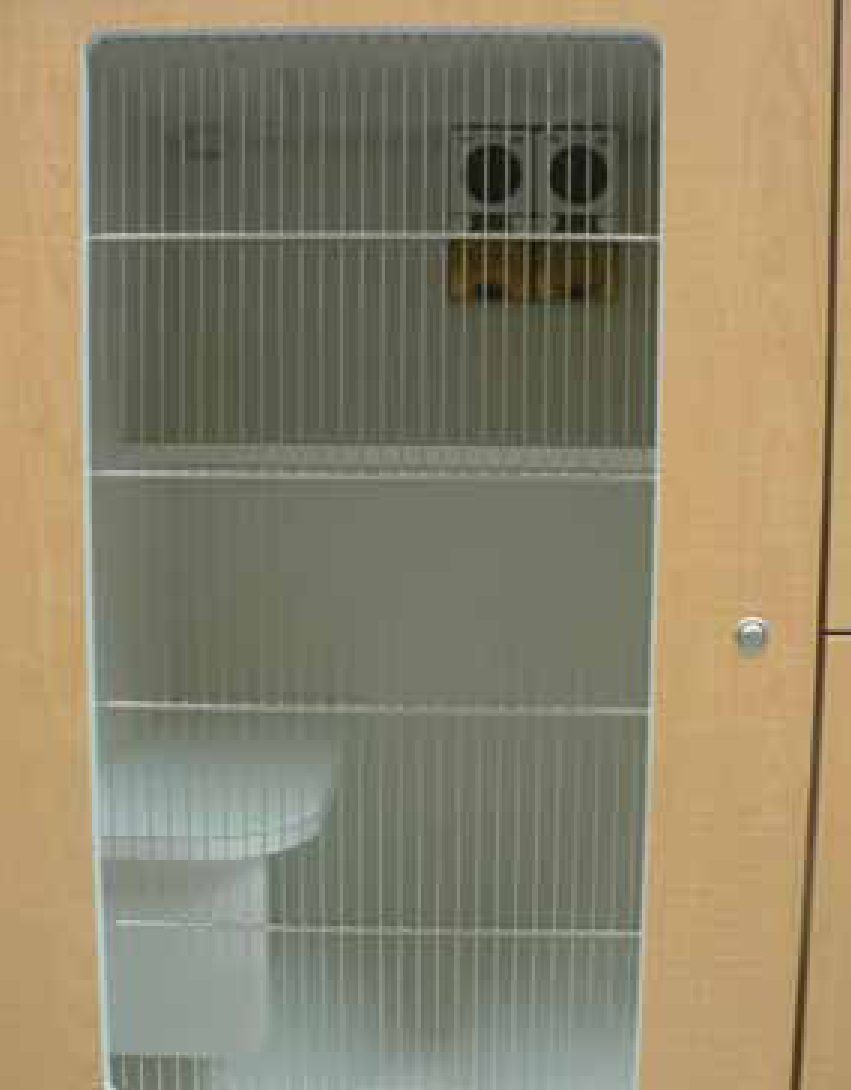
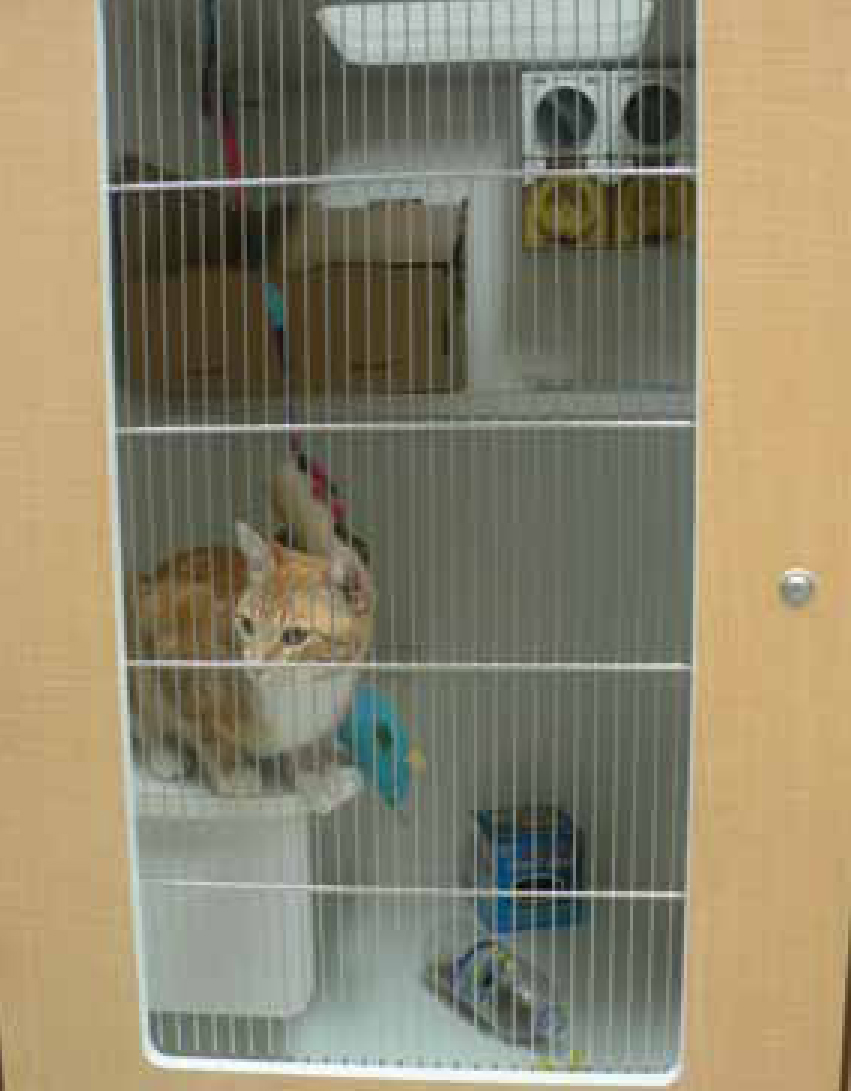
The results showed that cats housed in the traditional cages were significantly more stressed than those housed in the enriched cages. They exhibited the most fearful behaviour as indicated by a higher score in the Cat-Stress-Scores (Gourkow and Fraser, 2006). The clinical component of this study, which was undertaken secondarily, measured the development of illness. Data showed that more animals (14%) housed in the traditional cages were moved to isolation because of illness when compared with animals housed in the enriched cages. While this is not definitive it is certainly consistent with research on the adverse effects of persistent stress on health in humans and laboratory animals (Connor and Leonard, 1998; Moberg, 2000; Dobson et al, 2001; Hewson, 2008).
Other studies have looked at the influence of auditory and olfactory stimulation on the behaviour of dogs (Wells et.al, 2002; Graham et al, 2005). Wells (2002) reported that the behaviour of kennelled dogs was significantly influenced by the type of auditory stimulation provided to them. Dogs in this study were exposed to classical music, heavy metal, pop and human conversation (radio programme with no music), and although the specific effect of classical music is unknown it resulted in dogs spending more time resting and less time barking. Heavy metal appeared to agitate the dogs and neither pop nor human conversation had any obvious effect. It is common in both shelter environments and veterinary clinics for staff to listen to general radio programmes and this may contribute to the apparent lack of response to this stimulus. Wells (2002) suggests that the reactions to both classical and heavy metal are due to the novelty factor of these types of music. However, the reactions to each form of novelty music were quite different, with heavy metal music resulting in increased barking and more arousal and activity. This is consistent with studies with human subjects where heavy metal music has an arousing effect (Gowensmith and Bloom, 1997).
More recently, a study has been carried out investigating the effect of ‘dog-laughter’ (pronounced breathy forced exhalations from a dog) which had been recorded and played back to shelter dogs (Simonet et al, 2005). This study revealed significantly less behavioural signs of distress (lunging, growling, barking, pacing, salivating and avoidance) in dogs exposed to dog-laughter compared with those who were not exposed. While no known studies have been carried out to date using dog-laughter in a veterinary clinic, it is believed that the same stress-reducing benefits could be achieved in hospitalized dogs as seen in shelter dogs.
Additionally, the significance of odours for psychological well being is well recognized in human literature and as such has prompted research into the value of olfactory stimulation as a means of EE for animals (Wells et al, 2002; Pageat and Gaultier, 2003; Graham et al, 2005). Pheromone enrichment is the provision of synthetic pheromone products within an animal's environment in order to improve welfare (Ellis, 2009). There have been a number of empirical studies conducted in this area that suggest the use of pheromones is successful in reducing anxiety, stress and associated behaviours as well as facilitating positive interactions both intra and inter specifically (Pageat and Gaultier, 2003; Graham et al, 2005; Tod et al, 2004; Mills et al, 2006; Kim et al, 2010).
Dog appeasing pheromone (DAP) (CEVA Santé Animale) is designed to imitate the secretions of sebaceous glands in the intermammary sulcus of bitches shortly after parturition. DAP is a synthetic mixture of fatty acids formulated as a spray or a diffuser. It has been reported that DAP has calming effects in dogs in a range of stressful situations including separation from their owner (Pageat and Gaultier, 2002). A study by Mills et al (2006) concluded that initial exposure to DAP in the veterinary clinic appeared to help reduce the signs of anxiety associated with the less aversive aspects of a visit to the veterinary clinic.
A study of 43 hospitalized dogs in South Korea, housed for more than 4 days, evaluated the effect of DAP on ten typical separation-related behavioural signs (Kim et al, 2010) (Table 3). A control group of 19 dogs was evaluated first; these dogs were exposed to placebo (empty) diffusers that were covered with opaque tape to avoid visual identification and installed 1.8 m high on the wall of the sickroom. A further 24 dogs received DAP through diffusers placed as the placebo diffusers. All diffusers were changed once a month. While this study had limitations with methodology and standardization, when comparing baseline and final assessments, there was overall improvement in separation-related behavioural signs in the DAP-treated group, in particular elimination, excessive licking and pacing (Kim et al, 2010).
Table 3. Separation-related behaviours
| Destructiveness (scratching or chewing bars to escape) | Excessive licking |
| Vocalization (frequent whining, barking and howling) | Anorexia |
| Elimination (frequent urination and defecation) | Gastrointestinal problems (vomiting and diarrhoea) |
| Vigilance | Hyper-salivation |
| Trembling | Pacing |
Feliway (F3) and Felifriend (F4) (CEVA Santé Animale) are synthetic facial pheromones. Observations of cats treated with Feliway have shown not only a decrease in urine marking and scratching, but also an improvement in feeding, scanning and playing; there is a direct correlation between the use of F3 and a decrease in anxiety (Pageat and Gaultier, 2003). There is evidence that F3 does have an anxiolytic effect when used in a clinical situation; it has been shown to calm cats before intravenous catheterization (Mertens, 2001) and prevent stress-induced anorexia in hospitalized cats (Griffith et al, 1999). Furthermore, F3 has been shown to have a great emotional stabilization effect (Pageat and Gaultier, 2003).
F4 facial pheromone is marketed primarily for use as an aid in intra- and inter-specific interactions. It helps reduce the risk of aggression caused by handling and facilitates peaceful introduction of unfamiliar animals (Pageat and Gaultier, 2003). The success of the treatment is determined by the willingness of the cat to mark (facial rubbing) unfamiliar people or animals.
Further studies have been conducted on olfactory stimulation using certain odours (Wells and Egli, 2004; Graham et al, 2005). Many of these studies report changes in the behaviour and/or physiology of animals exposed to a variety of aromas including herbs, spices, essential oils and the excrement, or body odour, of potential prey. As Graham (2005) aptly points out, the findings from such work and their implications for animal welfare are not conclusive. However, the results in terms of positive changes in behaviour and physiology cannot be denied.
Turning information into action
EE in the context of veterinary clinical practice can be as simple as adding a new CD to your collection or as elaborate as providing food dispensers that operate in response to particular behaviours (Figure 4). Communicating with clients and making arrangements for house mates to be hospitalized together, where appropriate, can also provide beneficial enrichment (Figure 5). Whatever the strategy used, it is important to remember that for an environmental intervention to be considered enriching, the changes produced must be linked to an improvement in the welfare of the animals (Ellis, 2009).
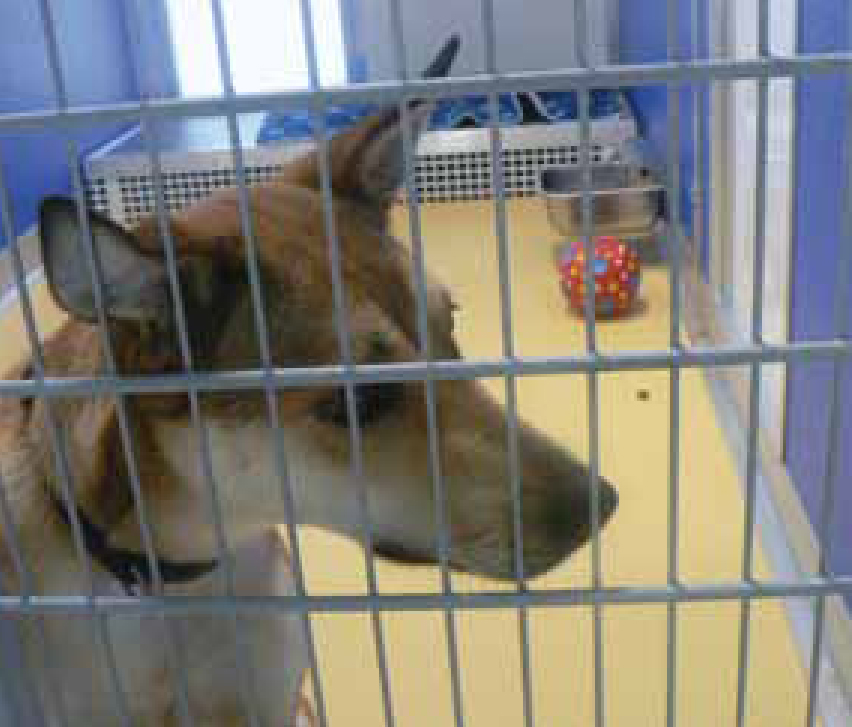
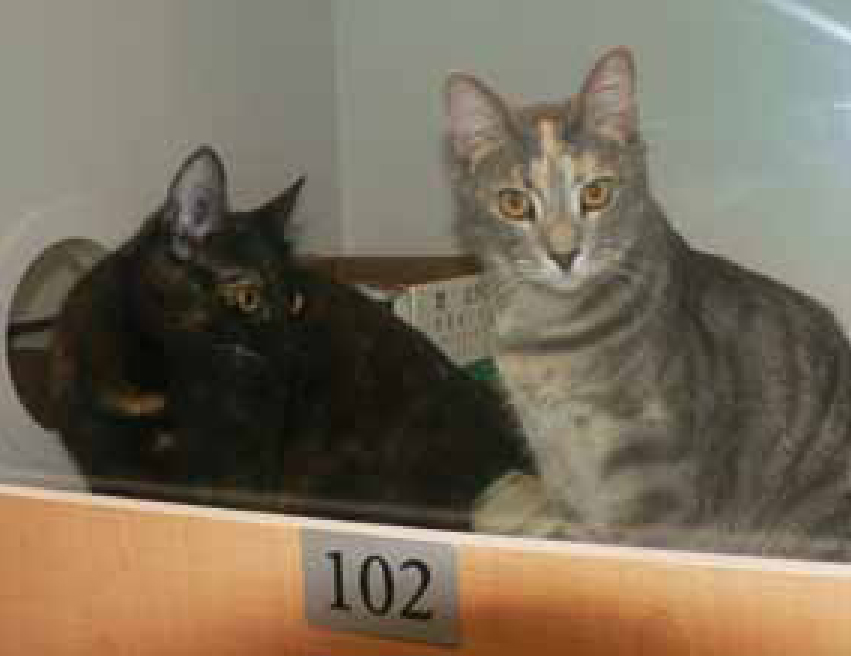
Feliway diffusers used as standard protocol in feline wards can enhance the mental wellbeing of hospitalized patients. This, together with soft music and the use of Felifriend sprayed on hands before interacting with a cat or even a small amount sprayed on bedding will contribute to ensuring an animal's stay in clinic is as stress free as possible.
Additionally, it should be remembered that human tactile interaction (Figure 6) provides highly valued enrichment to companion animals. The majority of domesticated pets are gregarious animals who relish human company. It is important that human contact with hospitalized patients is not restricted to monitoring and treatment only. To prevent negative associations with human contact in the veterinary clinic, all personnel should heed the ‘three-to-one’ rule: for every unpleasant or invasive experience, three positive experiences should follow (Shaffran, 2005)
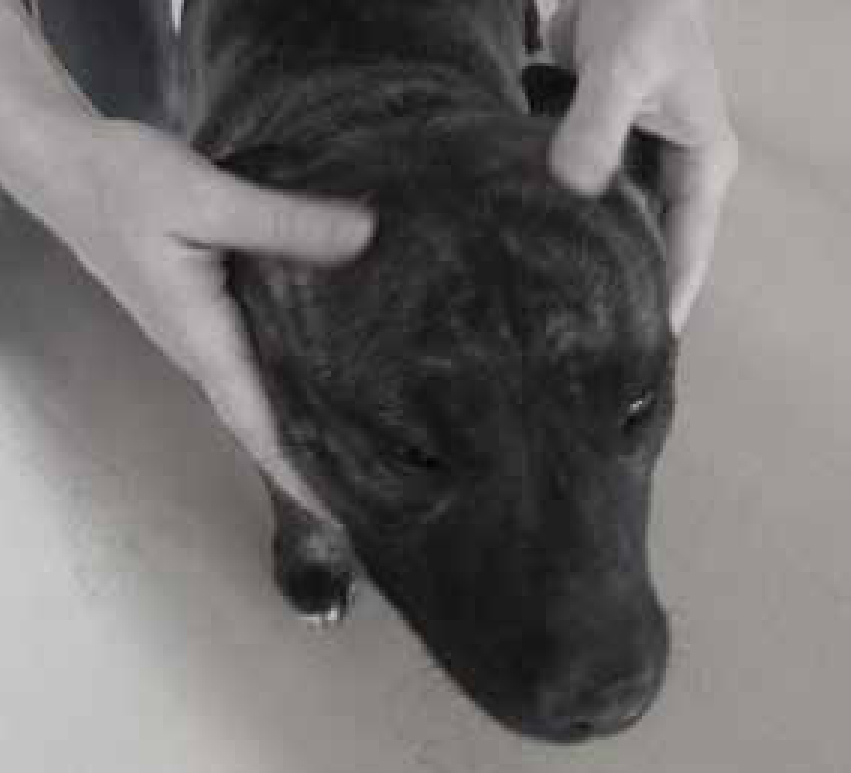
Strategies can be classified as animate or inanimate, and within these classifications are subsections as summarized in Table 4.
Table 4. Classification of environmental enrichment strategies
| Category | Sub-section | Examples of potential enrichment strategies | |
|---|---|---|---|
| Cats | Dogs | ||
| Animate | Intra-specific | Feline companions | Canine companions |
| Inter-specific | |||
| — human | Play therapy, handling, grooming, massage, training sessions | Structured play (ragging, frisbees, retrieval games, training sessions | |
| Inanimate | Physical space | ||
| — vertical | Shelving and hammocks | Platform or plinth | |
| — materials | Bedding, litter material, grass bunches | Bedding, sand bowl, grass bunches | |
| — structures | Boxes, scratch posts/natural wood, tunnels | Tunnels, sand pits | |
| Feeding | Hiding food: activity balls, plastic bottles, food pyramids, treat puzzles | Hiding food, scatter feeding, activity balls, plastic bottles, kongs, treat puzzles and frozen blocks | |
| Toys | Wire-based toys, bird bells and mirrors, fishing rod toys | Raggers, balls, tugs, squeak's, soft toys | |
| Sensory | |||
| — visual | Other animals, TV, window, visual access to staff, blocking visual stimulus may also be enriching | Other animals, TV, window, blocking visual stimulus may also be enriching | |
| — auditory | Classical music, running water, | Classical music, dog-laughter | |
| — olfactory | Catnip, essential oils | Essential oils, prey odours | |
| — pheromone | F3 and F4 facial pheromones | Dog appeasing pheromone | |
Conclusion
EE is the process of adding one or more factors to an animal's environment in order to improve the physical/psychological welfare of the animal (Ellis, 2009). Integration of a simple yet effective stress management programme for hospitalized dogs and cats provides holistic care within the veterinary practice.
Moreover, further studies are warranted on the effects and benefits of EE in veterinary practice.
Key Points
- A visit to the veterinary surgeon can be a very stressful and anxious experience for some companion animals.
- It is important for veterinary staff to be able to recognize the signs of ‘emotional’ stress in hospitalized animals.
- It is suggested that incorporation of environmental enrichment (EE) into practice policy may reduce stress associated with hospitalization and separation from owners.
- EE programmes may utilize different types of visual, sensory, auditory and olfactory enrichment.
- Enrichment such as food balls and activity cubes or the use of pheromones such as Dog Appeasement Pheromone (DAP) or Feliway are examples of simple yet effective ways to integrate EE in practice policy.
- Further investigations into the effects and benefits of EE in veterinary practice are warranted.

